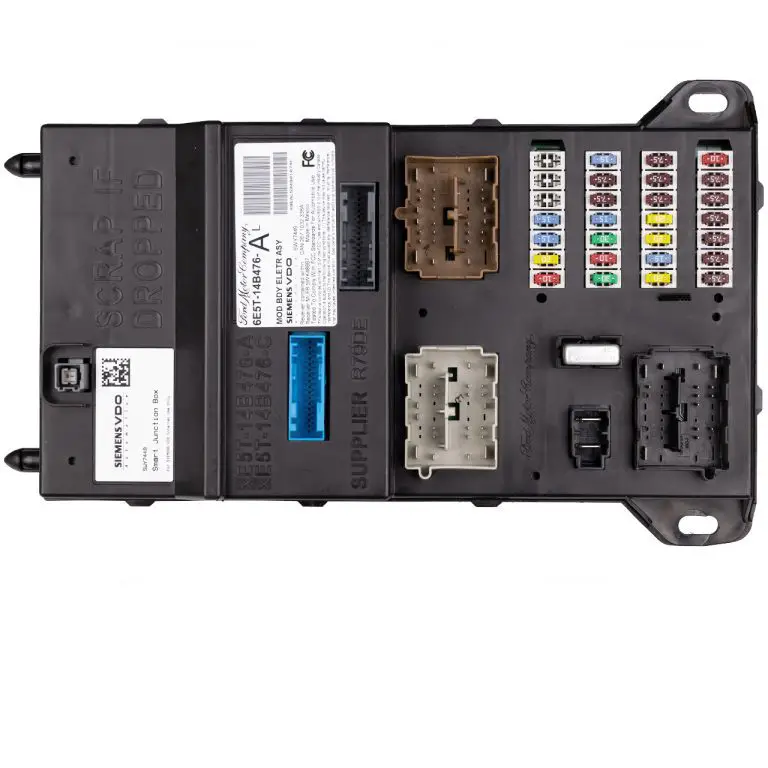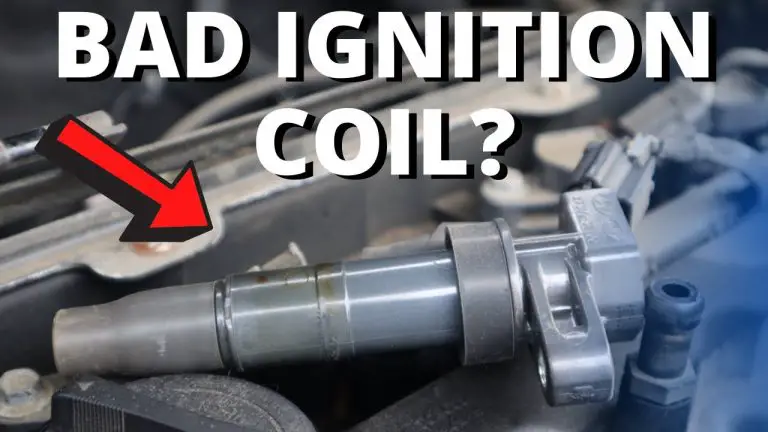Symptoms To Detect Bad Transmission Solenoid On Honda CRV
The Honda CRV has long been praised for its reliability, versatility, and smooth performance. However, like any mechanical system, its components can occasionally encounter issues. One crucial component responsible for the smooth operation of your CRV’s transmission is the transmission solenoid.
The transmission solenoid plays a vital role in regulating the flow of transmission fluid, controlling gear shifts, and ensuring the overall efficiency of your vehicle’s transmission system. When this solenoid starts to malfunction, it can lead to a range of problems that affect the driving experience and potentially damage other transmission components.
In this blog post, we will explore the symptoms associated with a faulty transmission solenoid in a Honda CRV. Recognizing these signs early on can save you from expensive repairs down the road and help you address the issue promptly.
Whether you are an experienced driver or a first-time CRV owner, understanding the warning signs of a bad transmission solenoid is crucial for maintaining the performance and longevity of your beloved Honda CRV. So, let’s dive in and discover the telltale symptoms of a malfunctioning transmission solenoid in your CRV.
Signs Of A Bad Honda CRV Transmission Solenoid?
A bad transmission solenoid in a Honda CRV can manifest in several ways. Here are some common signs that indicate a faulty transmission solenoid:
1. Erratic or Delayed Shifting
One of the most noticeable symptoms of a bad transmission solenoid is erratic or delayed shifting. You may experience difficulty shifting gears, such as sudden jerks or hesitation when accelerating or decelerating. The transmission may also get stuck in a particular gear, making it challenging to maintain speed or accelerate smoothly.
2. Gear Slippage
Another red flag is gear slippage, where the transmission slips out of gear or shifts into neutral unexpectedly while driving. This can be dangerous and may result in a loss of power or control over the vehicle.
3. Transmission Overheating
A malfunctioning solenoid can disrupt the normal flow of transmission fluid, leading to inadequate cooling and lubrication. Consequently, the transmission may overheat, causing warning lights to illuminate on the dashboard. Additionally, you may notice a burning smell coming from the engine compartment.
4. Transmission Fluid Leaks
Faulty solenoids can cause transmission fluid leaks. If you spot reddish fluid pooling underneath your Honda CRV, it’s crucial to have it inspected promptly, as low fluid levels can lead to further damage and transmission failure.
5. Illuminated Check Engine Light
A bad transmission solenoid can trigger the check engine light on your dashboard. Modern vehicles are equipped with onboard diagnostics that detect issues in various systems, including the transmission. If the solenoid is malfunctioning, it will likely trigger an error code, indicating the need for professional attention.
What Are The Symptoms Of A Bad Honda CRV Transmission Solenoid?
A bad transmission solenoid in a Honda CRV can exhibit several symptoms that indicate its malfunction. Here are the common signs to look out for:
1. Gear Shifting Issues
One of the primary symptoms of a faulty transmission solenoid is erratic or improper gear shifting. You may experience delayed shifting, where the transmission takes longer than usual to engage into the desired gear. Alternatively, you might notice abrupt, harsh shifts or difficulty in shifting gears smoothly. These issues can disrupt the overall driving experience and make it challenging to accelerate or maintain speed.
2. Slippage or Neutral Gear
Another sign of a bad transmission solenoid is gear slippage or the transmission slipping into neutral unexpectedly. You may feel a loss of power or notice the engine revving higher than usual while the vehicle fails to accelerate or respond properly. This can pose safety risks, especially when driving on busy roads or highways.
3. Overheating Transmission
A malfunctioning solenoid can disrupt the normal flow of transmission fluid, leading to inadequate cooling and lubrication of the transmission system. As a result, the transmission can overheat, causing warning lights to illuminate on the dashboard. You may also detect a burning smell emanating from the engine compartment.
4. Transmission Fluid Leaks
Faulty transmission solenoids can cause fluid leaks. If you observe reddish fluid pooling underneath your Honda CRV, it could be an indication of a transmission fluid leak. Low fluid levels can lead to further damage and potentially result in transmission failure if not addressed promptly.
5. Illuminated Check Engine Light
A bad transmission solenoid can trigger the check engine light on your dashboard. Modern vehicles are equipped with onboard diagnostics that detect issues in various systems, including the transmission. If the solenoid is malfunctioning, it may generate error codes, prompting the check engine light to illuminate.
What To Do When You Detect A Bad Honda CRV Transmission Solenoid?
When you detect a bad transmission solenoid in your Honda CRV, it’s important to take prompt action to address the issue and prevent further damage. Here’s what you should do:
1. Safety First
If you experience sudden gear shifts, slippage, or any other severe symptoms while driving, prioritize safety. Pull over to a safe location away from traffic and turn off the engine. Do not attempt to drive the vehicle if it’s exhibiting dangerous behavior.
2. Professional Diagnosis
Contact a qualified mechanic or take your Honda CRV to an authorized service center for a professional diagnosis. They have the expertise and specialized tools to accurately identify the problem with the transmission solenoid. Be sure to communicate the specific symptoms you have observed to assist them in the diagnostic process.
3. Repair or Replacement
Based on the diagnosis, the mechanic will recommend the appropriate course of action. In some cases, a transmission solenoid can be repaired if the issue is minor or related to electrical connections. However, if the solenoid is severely damaged or worn out, it may need to be replaced. Follow the recommendations of the mechanic and authorize the necessary repairs.
4. Regular Maintenance
After repairing or replacing the transmission solenoid, it’s crucial to follow a regular maintenance schedule for your Honda CRV. Routine maintenance, such as regular fluid changes and inspections, can help prevent future transmission issues and prolong the lifespan of your vehicle’s transmission system.
5. Stay Informed
As a responsible vehicle owner, it’s beneficial to educate yourself about the functioning of your Honda CRV’s transmission system and the common signs of transmission problems. This knowledge will enable you to detect potential issues early and take appropriate action promptly, minimizing the risk of severe damage.
Is Replacing A Bad Honda CRV Transmission Solenoid Typically Expensive?
The cost of replacing a bad transmission solenoid in a Honda CRV can vary depending on several factors, including the specific model year, labor rates in your area, and whether you choose an authorized service center or an independent mechanic. However, in general, the cost of replacing a transmission solenoid is usually more affordable compared to replacing the entire transmission.
On average, the price range for a transmission solenoid replacement in a Honda CRV can be anywhere from $300 to $800, including parts and labor. Keep in mind that this is an estimate, and the actual cost may differ based on the factors mentioned earlier.
Additionally, if the solenoid issue has caused damage to other transmission components, there may be additional repair costs involved. It’s important to have a professional diagnosis to assess the extent of the damage and provide an accurate estimate for the repairs.
To get a precise cost estimate, it is recommended to consult with a reputable mechanic or authorized service center. They can evaluate your specific situation, provide an accurate estimate, and answer any questions you may have regarding the replacement process and associated costs.
Remember that addressing a bad transmission solenoid promptly can prevent further damage to your vehicle’s transmission system, potentially saving you from more expensive repairs in the future.
How Often Should You Inspect Or Service The Honda CRV Transmission Solenoid?
The recommended frequency for inspecting or servicing the transmission solenoid in a Honda CRV can vary based on several factors, including the model year of your vehicle and the manufacturer’s recommendations. However, as a general guideline, it is advisable to include the transmission solenoid inspection as part of your regular maintenance schedule.
For newer Honda CRV models, it is typically recommended to have a comprehensive inspection of the transmission system, including the solenoid, every 30,000 to 60,000 miles or every two to three years, whichever comes first. This allows for early detection of any potential issues or wear and tear on the solenoid.
It’s worth noting that the transmission solenoid is an integral part of the transmission system, and its proper functioning is crucial for smooth gear shifting and overall transmission performance. Therefore, if you notice any symptoms of a bad transmission solenoid, such as erratic shifting or gear slippage, it is essential to have it inspected and serviced promptly, regardless of the mileage or recommended intervals.
Always refer to your Honda CRV owner’s manual for the manufacturer’s specific recommendations on maintenance schedules and intervals. Additionally, consulting with a qualified mechanic or authorized service center can provide personalized guidance based on the age and condition of your vehicle.
Remember that regular inspections and maintenance not only help ensure the proper functioning of the transmission solenoid but also contribute to the overall longevity and performance of your Honda CRV’s transmission system.
FAQ:
Q: What are the symptoms of a bad Honda CRV transmission solenoid?
A: The symptoms of a bad transmission solenoid in a Honda CRV can include erratic or delayed shifting, gear slippage or shifting into neutral unexpectedly, transmission overheating, transmission fluid leaks, and an illuminated check engine light.
Q: How do I know if my Honda CRV has a bad transmission solenoid?
A: If you experience issues such as difficulty shifting gears, sudden jerks or hesitation during acceleration or deceleration, gear slippage, transmission overheating, transmission fluid leaks, or the check engine light illuminating, these are signs that your Honda CRV may have a faulty transmission solenoid.
Q: Can a bad transmission solenoid cause other transmission problems?
A: Yes, a bad transmission solenoid can potentially cause other transmission problems. It can disrupt the normal flow of transmission fluid, leading to inadequate cooling and lubrication of the transmission system. This can result in overheating, premature wear of transmission components, and potentially even transmission failure if not addressed promptly.
Q: How much does it cost to replace a bad Honda CRV transmission solenoid?
A: The cost of replacing a bad transmission solenoid in a Honda CRV can vary depending on factors such as the model year, labor rates, and whether you choose an authorized service center or an independent mechanic. On average, the cost can range from $300 to $800, including parts and labor.
Q: How often should I inspect or service the Honda CRV transmission solenoid?
A: It is generally recommended to include a comprehensive inspection of the transmission solenoid as part of your regular maintenance schedule for a Honda CRV. This inspection is typically done every 30,000 to 60,000 miles or every two to three years, whichever comes first. However, if you notice any symptoms of a bad transmission solenoid, it is important to have it inspected and serviced promptly, regardless of the mileage or recommended intervals.
Q: Can I drive my Honda CRV with a bad transmission solenoid?
A: It is not advisable to drive your Honda CRV with a bad transmission solenoid. A faulty solenoid can cause issues with shifting gears, gear slippage, and potentially lead to further damage to the transmission system. It is recommended to have the issue addressed by a qualified mechanic as soon as possible to avoid potential safety risks and more costly repairs.


